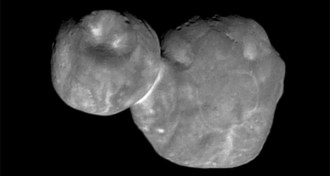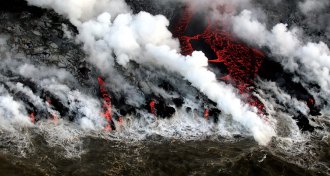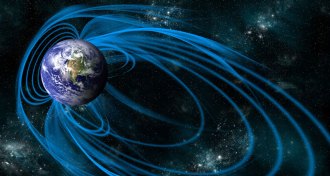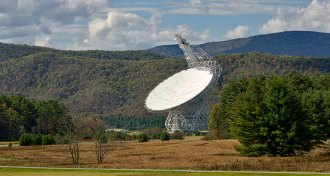Uncategorized
-
 Animals
AnimalsScientists name 66 species as potential biodiversity threats to EU
North America’s fox squirrel, the venomous striped eel catfish and 64 other species are now considered invasive in the European Union.
-
 Planetary Science
Planetary ScienceThe latest picture of Ultima Thule reveals a remarkably smooth face
Kuiper Belt object MU69, nicknamed Ultima Thule, is largely unmarred by impact craters, suggesting the Kuiper Belt might lack small objects.
-
 Earth
EarthFive explosive things the 2018 eruption taught us about Kilauea
Kilauea’s 2018 eruption allowed volcanologists a clear window into the processes that have shaped and influenced the world’s most watched volcano.
-
 Earth
EarthEarth’s core may have hardened just in time to save its magnetic field
Earth’s inner core began to solidify sometime after 565 million years ago — just in time to prevent the collapse of the planet’s magnetic field, a study finds.
-
 Anthropology
AnthropologyWhy modern javelin throwers hurled Neandertal spears at hay bales
A sporting event with replica weapons suggests that Neandertals’ spears may have been made for throwing, not just stabbing.
By Bruce Bower -
 Plants
PlantsHow light-farming chloroplasts morph into defensive warriors
Researchers now know which protein triggers light-harvesting plant chloroplasts to turn into cell defenders when a pathogen attacks.
By Jeremy Rehm -
 Space
SpaceIt’s time to start taking the search for E.T. seriously, astronomers say
Astronomers are hoping to make looking for alien technology an official science goal of NASA.
-
 Health & Medicine
Health & MedicineReaders have questions about Parkinson’s disease, moth wings and more
Readers had questions about Parkinson’s disease, the new definition of a kilogram’s mass, Saturn’s moon Dione and more.
-
 Planetary Science
Planetary ScienceWe spent New Year’s Eve in the Kuiper Belt
Editor in Chief Nancy Shute discusses Science News' coverage of NASA's New Horizons spacecraft's flyby of Ultima Thule.
By Nancy Shute -
 Health & Medicine
Health & MedicineVitamin D supplements aren’t living up to their hype
Once seen as a supplement with a long list of benefits, vitamin D’s glow may be dimming.
By Laura Beil -
 Anthropology
AnthropologyDogs may have helped ancient Middle Easterners hunt small game
Jordanian finds point to pooch-aided hunting of small prey around 11,500 years ago, offering new clues into dog domestication in the Middle East.
By Bruce Bower -
 Animals
AnimalsMale birds’ sexy songs may not advertise their brains after all
A biologist backs off an idea he studied for years that the mastery of birdsong is a sign of bird smarts.
By Susan Milius